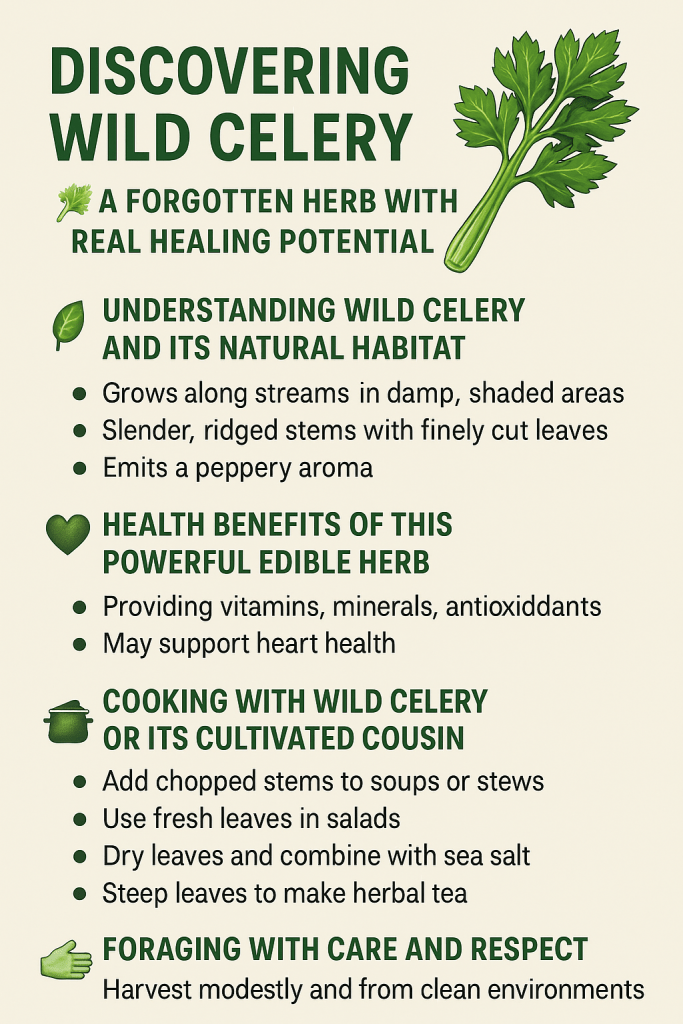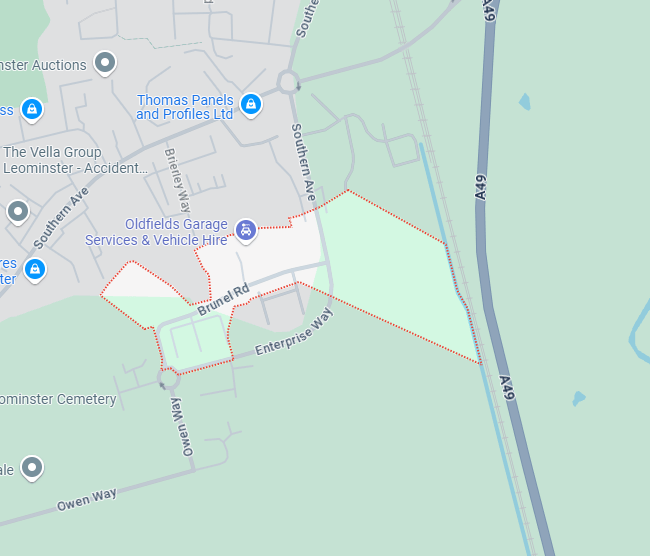🥬 Discovering Wild Celery: A Forgotten Herb with Real Healing Potential
Wild celery often flies under the radar — easily dismissed as just another riverside plant. However, this leafy herb has a long-standing history of traditional use and is packed with unexpected benefits. Whether you’re exploring wild herbs, trying your hand at foraging, or simply hoping to reconnect with seasonal, homegrown foods, this powerful herb deserves a spot on your radar.
🌿 Understanding Wild Celery and Its Natural Habitat
So, what exactly is wild celery and where can you find it? It’s a native species growing in the UK’s wetter spots — along streams, near marshes, and tucked into shaded ditches.
Look closely and you’ll spot its delicate appearance: slender, ridged stems paired with finely cut leaves that fan out like parsley. One unmistakable feature is the scent — crush a leaf and you’ll notice a strong, peppery aroma that’s difficult to miss. There as been research done on this awesome plant.
🕵️ Spotting It Safely: Tips to Avoid Lookalikes
It’s important to point out that wild celery is a member of the same plant family as hemlock — a notorious toxic lookalike. That’s why confident identification is essential before harvesting anything.
Here’s what to look for:
-
Grows in clusters in damp, shaded areas
-
Leaves resemble parsley, but lighter and more aromatic
-
Hollow stems with distinct grooves
-
Bold celery-like smell when rubbed
To stay safe, always bring a trustworthy guidebook or a well-rated plant identification app. And for peace of mind, it’s always best to join someone who’s already skilled at spotting wild edibles — it makes for a safer and more enjoyable experience.
💚 Health Benefits of This Powerful Edible Herb
This hardy herb has been a part of traditional plant medicine for generations. It offers a robust flavour profile alongside a solid nutritional boost when added to your meals.
🔋 A Rich Source of Vital Nutrients
One of the main appeals of wild celery lies in its nutrient content. It provides vitamins A, C, and K, as well as minerals such as potassium and magnesium. As a result, these nutrients contribute to healthy bones, blood clotting, immune defence, and fluid balance.
🌱 Traditional Medicinal Uses of Wild Celery
In folk herbalism, this plant has long been used to aid digestion, soothe swelling, and promote detoxification. Its oils may stimulate bile flow, which helps with digestion and breaking down fats. In addition, it was often chosen to help ease mild bloating or excess water retention.
🔥 Anti-inflammatory and Antioxidant Potential
The herb also contains helpful plant-based compounds known to support the body’s natural response to inflammation. These flavonoids may play a role in shielding cells from the effects of oxidative stress and early degeneration.
❤️ Supports Heart and Circulatory Health
Thanks to its balanced blend of potassium and fluid-regulating properties, wild celery may support circulation and help maintain proper hydration levels. That balance may, in turn, help reduce strain on the heart and vessels.
🍲 Cooking with Wild Celery or Its Cultivated Cousin
If you’re new to foraged herbs, start small. The flavour of wild celery is stronger than shop-bought varieties, so you only need a few leaves or stems to make an impact.
Some ways you can try it in your kitchen:
-
🥄 Add chopped stems into warm dishes like soups or stews to enhance savoury depth
-
🥗 Use it fresh in salads to lift citrus dressings and olive oil
-
🧂 Dry the leaves, then combine with garlic and sea salt to make a punchy seasoning
-
🍵 Steep the leaves in hot water for a gentle herbal tea
One favourite trick: add a handful of leaves and stems to a slow-cooked bone broth. The herbal aroma is beautifully warming and adds depth to even the simplest dish.
🤲 Foraging with Care and Respect
When gathering herbs from the wild, take only what you’ll actually use and leave the rest to continue growing.
Make sure you harvest from safe areas — well away from roads, industrial sites, or farmland where chemicals may have been sprayed. Clean soil equals clean plants.
If you’d rather not forage just yet, wild celery also takes well to growing at home. It doesn’t need much — just a quiet, damp corner with low sunlight will do the trick.
🔄 Why Rediscovering This Herb Matters
These days, it’s easy to get disconnected from the plants and seasonal foods growing just beyond our doorstep. Supermarket shelves rarely reflect what’s fresh, wild, or truly local.
Even so, taking time to explore herbs like wild celery helps us rediscover the quiet nourishment available in nature.
Each time you gather your own greens, you reconnect with something timeless — a simple rhythm that’s been lost in the modern rush.
We hope you got some value out of our post and if you would like to have a read through some related posts there are a few below. Enjoy your day.
Here are a couple of articles you might find helpful:
👉 Galium Aparine Benefits
👉 Edible Wood Sorrel






